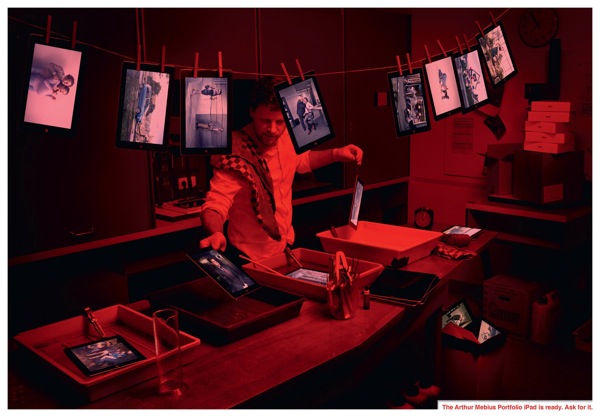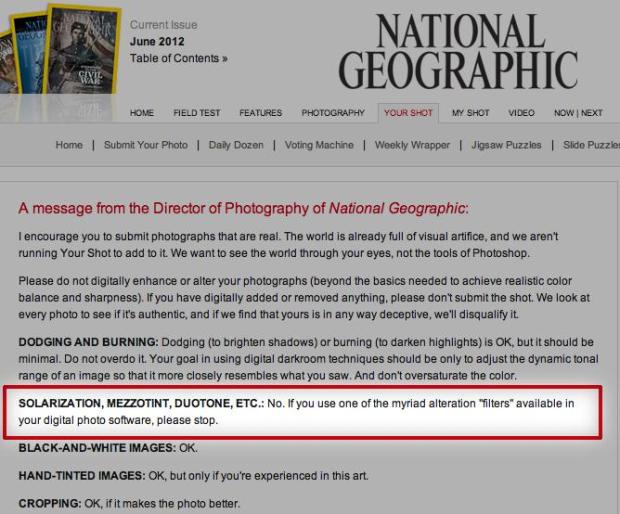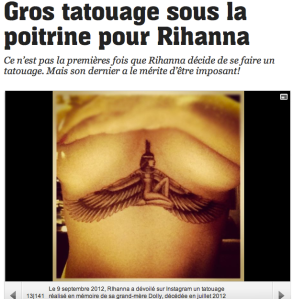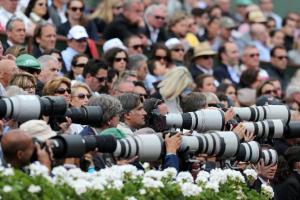Posts Tagged ethics
Instagram: a teen-toy or the new reporter tool?
Posted by leagloor in Technology on November 26, 2012
“Instagram photos cheat the viewer!” Nick Stern’s claim, published in February 2012 on cnn.com, came as a bombshell, engendering pros and cons-reactions in the journalism and photo-reporting world. Who’s right? Let’s have a look!
With more than 30 millions of users and about 150 photographs posted (see article on Wikipedia), the photo-editing and social-networking app Instagram can be described as one of the most successful Smartphone tools. Among its users; teenagers, adults, singers, actors, politicians and, of course, journalists!
Yet the journalistic use of Instagram in a professional perspective has created a huge debate on the web since last February. The vexed question: can journalists and photojournalists honestly use Instagram as a professional tool, to cover a war or a political meeting, or has it to remain a “toy” only good to post pictures of your breakfast or your new nail-art?
 |
Cheating with reality?
For some photographers no hesitation, Instagram has nothing to do with information and journalism. Here are some of their main arguments. But before, here you go with a video that shows you how Instagram works and what are its main features:
Filters and fake emotions
Photographs bring emotion, related to the subject, to the viewer’s history but also thanks to the way the picture is taken. Regarding this, the anti-Instagramers are clear: Instagram kills the authenticity, creativity and originality of your pictures.
For Nick Stern (see the complete article here and his website here), American news photographer and first anti-Instagram pamphleteer, the pictures taken with the app do not communicate real emotions, conveyed by the photographer, as it should. “It’s the work of an app designer in Palo Alto who decided that a nice shallow focus and dark faded border would bring out the best in the image”, he claims, “The image never existed in any other place than the eye of the app developer”.
“The greatest photographs are created in the mind of the photographer and not in the workings of the camera.” Nick Stern
Moreover, with 14 different filters, the variety of pictures is indeed quite large however rather limited. According to its accusers, Instagram creates therefore photographic standards, which enchain the users, kill their creativity and prevent them from expressing their emotions.
But was it not already the case with silver films? Indeed, during the development process, the photographer could use different chemical techniques such as cross-processing and could therefore add something external to the picture.
Aesthetics against information duty
Showing reality objectively is one of the main goals of any journalists. For the anti-Instagramers, using an app that adds effects on a picture in order to make it look fancier or nicer does not fit the profession ethics. That is why Nick Stern says that “Every time a news organization uses a Hipstamatic or Instagram-style picture in a news report, they are cheating us all”.
However aesthetics is a part of photography anyway such as subjectivity. Photographers are dealing with image and cannot completely distance themselves from the visual dimension of their job.
As Joerg Colberg, an American photographer says “We all know that all photography is fiction: as a photographer you make choices, which influence the photograph enough for it to be more of a fiction than a fact. […] But the photojournalist’s task, no actually the photojournalist’s duty is to minimize the amount of fiction that enters her/his photography. […] The problem with InstaHip in this particular context is it adds a huge amount of fiction to photography, simply by its aesthetic” (see the complete article here).
News Trivialisation
Another problem raised by the accusers is that the majority of the Instagram pictures deal with the users’ every day life: meals, hobbies, fashion, cosmetics, friends, family and pets. Mixing serious news pictures with these trivial subjects minimizes their value and their informational impact.
“Since in the dominant context, people’s social lives, InstaHip photographs are usually not seen as particularly relevant, once you use InstaHip as a photojournalist you’re applying that same kind of thinking to your images. You’re trivializing your message.” Joerg Colberg
Why so unserious?
Maybe the solution would be to create a parallel network, which would share the same technical features and would be exclusively destined to news companies, a kind of Infostagram! But we will come back to that later.
The Like button tyranny
As other social networks, Instagram allows the users to share their pictures on other social medias such as Facebook and Twitter and proposes a comment option and a Like button.
American panelists wondered to which extent “Instagram’s Like button, combined with the image filters, has turned the service into performance art, with people trying to rack up Likes for the most aesthetically striking images” explains Steve Myers in his article on Instagram (see the complete article here). A sort of photographic social desirability!
As we will see later, these social network features can also be positive for journalists. In the mean time, to read more about the Like-culture problematic, click here.
Vintage overdose
You can see it in fashion: vintage is trendy! And photography is no exception to the rule. Instagram, with its Instamatic and Polaroid-inspired effect perfectly incarnates this trend (see this article here). But as Jean Cocteau said “Fashion is what goes out of fashion.” Thus, the risk that Instagram becomes outmoded is real.
What risk for journalism then? Since Instagram becomes has-been, the information broadcasted on it will not be seen as relevant by its users or its ex-users. The value of information will be at stake.
Moreover, is not information supposed to be related to the here and now, to the burning issues and not focused on the past?
 Instamatic Kodak 100, 1963 |
 Polaroid One Step, ’80 |
Connecting people?
Does Instagram look like the Devil to you now? Fortunately some positive and helpful aspects can also be highlighted, all related to the social dimension of the app.
Information network
As already said, Instagram is not only a photo-editing app, it also allows the user to create an extended network, to follow people and to get followers. Videos on Youtube actually show you how to be followed by the maximum of users. Do you remember what we have said about the Like button tyranny?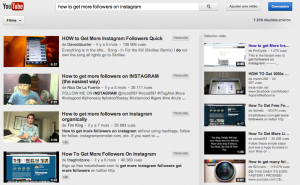
More seriously Instagram can become a real information feed, through the channels of news companies or through the topics dealt with on the official blog of the app (see here). However, at the moment, the media channels remain extremely poor and unfed. The only one which seems active is the CNN’s, perhaps because of its US origin and destination. Here are some examples taken from Webstagram, the Internet viewer of the app.
One of the rare successful examples of use is the covering of the New York Fashion Week 2012 by the New York Times. The journalists present on the site provided 450 pictures through the account created for this occasion, visible here. With 156’319 followers, the operation was a real success.
 |
 |
Another example: the National Geographic launched a blog fed with climbers’ Instagram pictures called “Field test – On Everest”. The Instagram feed of the magazine, visible here, is also well provided with pictures.
However the company seems less tolerant regarding the pictures sent by its readers. In a message on the company website, the photography director encouraged the National Geogrpahic readers to avoid sending them modified pictures:
This desire of authenticity and objectivity matches the cons arguments presented previously regarding Instagram.
The non-professional Keystone
If the National Geographic had a really ethical reaction regarding photography, this is not the case for some other medias. Indeed Instagram can be used as a kind of a non-professional Keystone.
Let’s think about several showbiz articles written by the 20minutes about Rihanna’s tattoo or Kim Kardashian’s look. The information comes directly from what the celebrities post on Instagram as a primary source. Even if we are talking about famous people, this is what we call crowdsourcing or UGC (User Generated Content).
In a more serious perspective, a new app has been developed, called “Signal”, a mix between Instagram and Foursquare. With this app, you can post pictures and geolocalize them.
Normal citizens and journalists will thus be able to get informed of the events happening in their country or their area. What happened with Twitter during the Arab Spring could also happen thanks to photographs (see complete article here).
Democratisation of photography
One of the main arguments against Nick Stern’s article was that his vision of photography was elitist. Let’s think about Mathew Ingram’s article (available here) who vividly criticizes this vision.
Likewise, the photographer and photography teacher Richard Koci Hernandez praises the new possibilities of interacting with the audience offered by Instagram: “More people are now being exposed to my journalism than ever before […] Now I have access to literally the entire world.” (see complete article here).
Thus, for Instagram-defenders, using this app is also a way to have access to a form of art production, which was by now saved for professionals and artists. But can we honestly put on the same level the technique required by an SLR camera manipulation and the use of a mobile phone?
A matter of perspective
As we have seen, no categorical answer to the Instagram problematic can be given. Asking what a relevant photograph or a worthy photographer should be requires also to ask what photography is. A hobby? A job? An art? The three of them? Maybe the answer lies in the context or the personal perspective in which the picture is taken.
Let’s think about Benjamin Lowy’s work in Afghanistan. He used Instagram but did not betray what the journalist Alex Garcia calls “the vision and mission of photojournalism – [he is] applying a creative aesthetic that adds meaning or accessibility to [his] images” (see complete article here).
Anyway we should not forget that, Instagram or not, photography is always a matter of choice. By then, watch the birdie!
By Lea Gloor
Twitter Journalism: limit shortfalls and master best practices
Posted by marcmenichini in Uncategorized on December 16, 2011
Young and upcoming journalist, are you on Twitter? If not, its probably time you were. You don’t understand a thing about the micro-blogging medium, you think it’s useless, dangerous and a waste of time… Think twice. And start tweeting! From Barack Obama to the guy-next-door, more than 100 million people around the world log in to Twitter monthly. Among them, thousands of journalists and their news outlet. Some tweet and re-tweet more than others. What exactly are they tweeting about? How are they using the social media? What are some of the best practices out there and how does one avoid Twitter’s shortfalls? How can a tweet become a reliable information?
If at this point you’re still doubtful about using Twitter straight away or in your future journalist career, it’s worth reading and following a selection of the best articles and blogs on Twitter journalism. Whilst we explore some of the best practices suggested in this literature, tested and experienced by tweeting journalists, we’ll also highlight some of the downfalls of the trendy social media. And tips to avoid them and turn your Twitter account into a precious journalistic tool.
Revolutionary distribution
For many journalists, Twitter is, first and foremost, an unprecedented large-scale content distribution tool. The mainstream media and the smaller ones too, have all their official Twitter accounts; @BBCNews, @nytimes, @Reuters, @NZZonline, @RSRinfo, @franceinfo and many more across the world. Beside such main accounts, they also have multiple accounts divided into categories. Most of them use their brand name or logo for identification and authentification. And what they do there is very similar to their RSS practices but its faster and reaches many more people. They tease upcoming stories, send headlines and breaking news.
Individual journalists, when they, and the media they work for, are clearly identified, do exactly the same thing. Plus they live blog about newsworthy events as they’re unfolding (for instance the recent election of the Swiss federal cabinet). Hence the need to master hashtags. They also share their intial thoughts, analysis and findings on a story they or their colleagues have been investigating. They re-tweet content they find interesting. Media companies (such as the Boston Globe) are investing time to monitor how all these accounts (institutional and individual) are used and followed. Applications have been created to master tweets’ best timing (WhenToTweet, Tweriod, TweetWhen, TweetReports and TweetStats). But many believe Twitter can be more, much more, than just a news platform or a news amplifier.
Enhanced reporting
Twitter enhances reporting, creates new means, ways to find information, engage with your audience, build your personal brand. Twitter has created a paradigm shift in the realm of news gathering. A shift that sets many challenges to journalism ethics. But we do have tools, habits and traditions to tackle and resolve them in an efficient and coherent manner. And to get a first glimpse at how Twitter can help your reporting:
As seen in this video, the micro-blogging medium allows you to find first of all contacts. Twitter is all about who you follow and who follows you. Choose with the utmost care who you follow. Most journalists go for the regular newsmakers, public figures, authoritative ones, experts in specific domains, people that have an interesting take on themes you cover. But Twitter allows you to broaden your contacts and create different communities, such as, for example, people living in your city or in your neighborhood. It all depends on your beat and area of interests. Curate these contacts, and create lists. Twitter can also be a valuable source of information. If, for the sake of this argument, you ignore the conversations the people you follow are having, Twitter also points to trending topics in your part of the world. Trendsmap too! Remember where the Hudson River crash news broke first or the one on Dominique Strauss-Kahn’s arrest? On Twitter.
Tweets are quicker than traditional media. Most of their main 2011 stories made the headlines. As a journalist, your main concern will be to source that information. Make sure it’s a accurate information. You need to verify, track down, triangulate. Just like they’ve always thought you in journalism school. Andy Carvin, NPR’s Senior Strategist best know for his ultra-professional coverage of the Arab twittosphere during the risings, has more in this interview:
There’s a lot of dross, hoaxes, rumours and spams flying on Twitter. Stick to your best journalist practices. And use Tweet Deck, twitter.com/search or twhirl to monitor, organize, aggregate all this fast-moving information.
Engage audiences
That’s not all! Twitter brings today’s revolutionized relation between journalists and audiences to a new dimension. Once your lists and other cummunities are properly curated, engage with your followers: crowdsource your information, start conversations or seek targeted feedback. Listen to what your community is talking about. And answer questions adressed to you, reply to general and personal remarks, suggestions. Barriers are down, no more ivory tower. This augmented relation can lead to story ideas and reliable sources of credible information. And, what is fare from negligeable today, a stronger personal brand.
Many mainstream media companies, that intensely engage with Twitter, have revised their ethical codes of conduct according to their staffs’ new practices (this evolution appears to be slower in continental Europe). They make for a compelling and essential reading to all who want to become tweeting journalists. Main advice: always uphold your basic journalistic standards. Think, before you tweet or re-tweet. Stick to accurate facts. Avoid buzz and noise, there’s already plenty of it. Make sure you have two separate accounts, a personnal one and a professional one where you avoid voicing your opinions. In both accounts, use your journalist’s common sense. It’s always better to respect your workplace and colleagues.
It appears Twitter itself is moving towards a news wire service. Traditional media will have to monitor this latest move carefully. What do you think? Is this the right way forward for Twitter? What are some of checks and balances such a system would need?

